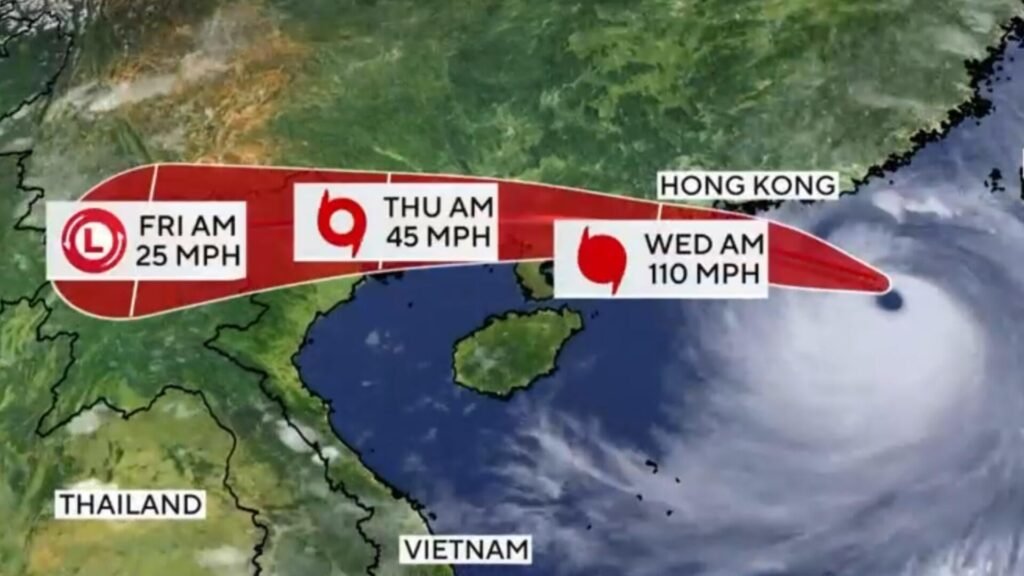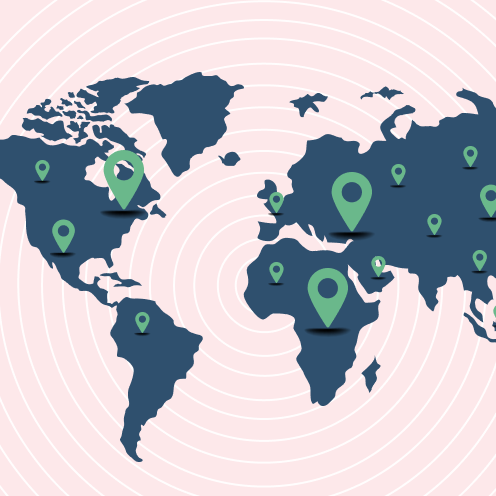Typhoon Ragasa, the world’s most powerful tropical cyclone this year, made landfall in southern China on Wednesday after killing 15 people in Taiwan and lashing Hong Kong with ferocious winds and heavy rains.
In Taiwan’s eastern Hualien county, 17 people remained missing after a barrier lake overflowed and sent a wall of water into a town, the fire department said Wednesday.
Subtropical Taiwan, frequently hit by typhoons, normally has a well-oiled disaster mechanism that averts mass casualties by moving people out of potential danger zones quickly.

But many residents in Guangfu, an eastern town in Hualien thronged by tourists, said there was insufficient warning when a lake overflowed during Tuesday’s torrential rains brought by Super Typhoon Ragasa. Premier Cho Jung-tai called for an inquiry into what went wrong with evacuation orders.
As rains inundated Taiwan, Hong Kong grappled with huge waves that crashed over areas of the Asian financial hub’s eastern and southern shoreline. The water rushed along pavements and submerged some roads and residential properties.
China’s marine authority issued its highest red wave warning for the first time this year, forecasting storm surges of up to 2.8 metres in parts of Guangdong province, as Ragasa charges toward the densely populated Pearl River Delta.
Fishermen killed in Philippines
Ragasa formed over the Western Pacific last week. Fuelled by warm seas and favourable atmospheric conditions, the tropical cyclone rapidly intensified to become a Category 5 super typhoon on Monday, with winds exceeding 260 kilometres per hour.
At least 10 deaths were reported in the Philippines, including seven fishermen who drowned after their boat was battered by huge waves and fierce wind, and flipped over on Monday off Santa Ana town in northern Cagayan province. Five other fishermen remained missing, provincial officials said.

Super Typhoon Ragasa slams into Philippines with nearly 300 km/h wind gusts
Super Typhoon Ragasa brought heavy rain and triggered landslides in the northern Philippines on Monday as it made landfall with sustained winds measuring 215 km/h and gusts of up to 295 km/h. One of this year’s strongest typhoons, Ragasa is forecast to remain in the South China Sea at least into Wednesday while skirting south of Taiwan and Hong Kong before hitting the Chinese mainland.
Nearly 700,000 people were affected by the onslaught in the main northern Philippine region of Luzon, including 25,000 people who fled to government emergency shelters.
Ragusa has since weakened to a Category 3 typhoon, still capable of bringing down trees and power lines, shattering windows and damaging buildings.
Landfall on south Chinese coast
After passing around 100 kilometres south of Hong Kong, Ragasa made landfall along the south Chinese coast.
Guangzhou, Shenzhen, Foshan and Dongguan, the largest cities in the storm’s path, are home to around 50 million people.
The emergency management ministry dispatched tens of thousands of tents, folding beds, emergency lighting and other rescue supplies to Guangdong province on Tuesday, Chinese state media reported, while more than 770,000 people have been evacuated.

Some shops and restaurants in the province parked large rented trucks in front of their storefronts in a bid to shield them from the storm, local media reported.
A crowd chasing the storm under Shenzhen Bay Bridge was moved on by traffic police.
“The typhoon was really intense, but I’ve not been out long,” said an electric scooter delivery driver who goes by the name of Tim and was using his vehicle to assess the damage.
“It’s a lot of fun, but it’s also dangerous. I wanted to ride around the waterfront, but it’s too dangerous, so I had to come back onto the bridge.”

China’s marine authority warned of a high risk of flooding in Shenzhen, especially in low-lying areas, with a storm surge alert expected to remain in effect until Thursday.
A woman and her five-year-old son were swept into the ocean on Tuesday after watching the typhoon from the Hong Kong waterfront, according to the South China Morning Post, which said they were now in intensive care.
The hospital authority in Hong Kong said at least 50 people had been injured by the typhoon, while the government had opened 50 temporary shelters, within which 791 sought refuge.
In the gambling hub of Macau next to Hong Kong, casinos were forced to shutter their gambling areas. Guests were not able to leave their property. One user on China’s Xiaohongshu app showed videos of doors being sealed at a casino resort for protection against gales and debris.





